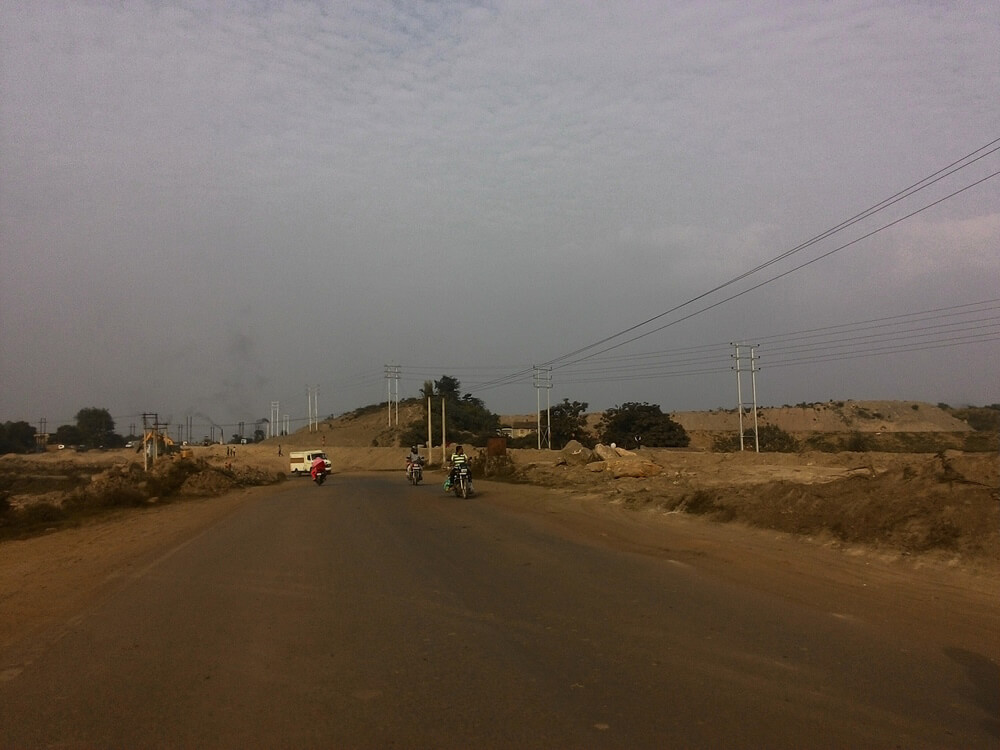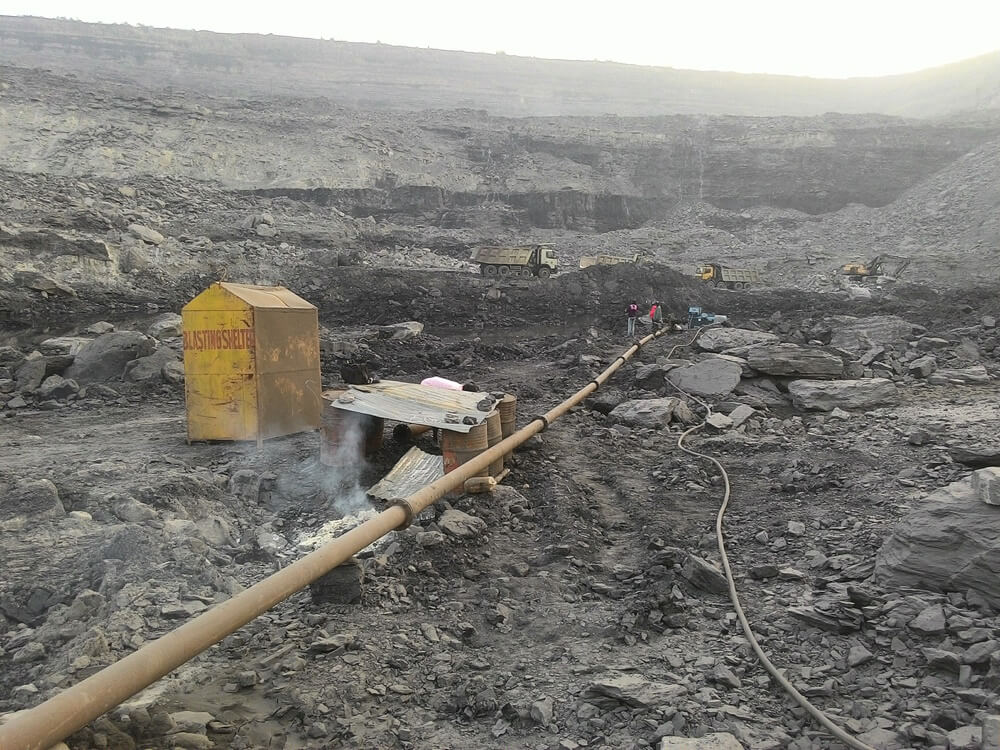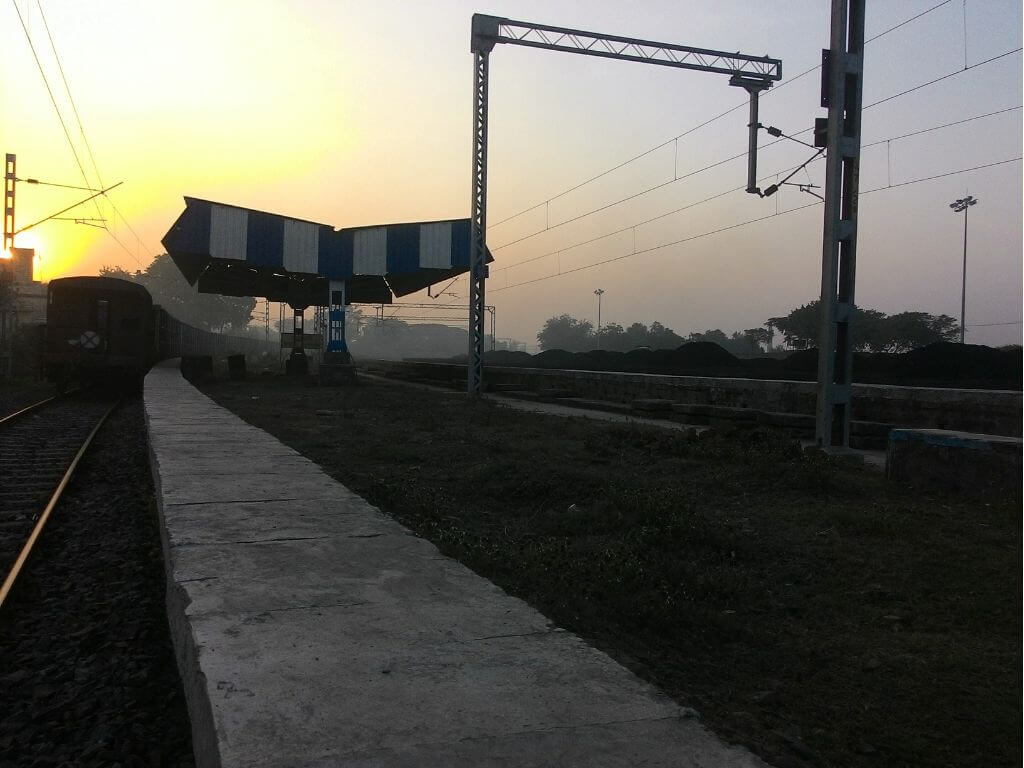“Dada, eto gorom porechhe – ekhon kaaj koraben ki (Brother, it has become so hot, will you have the work done now),” Dipankar Naskar, a mason, asked me on April 14, three days before the scheduled commencement of repair work in my apartment complex in Garia, a neighbourhood on the south-eastern fringes of Kolkata. The maximum temperature in and around the city had escalated[1] sharply over the preceding few days – from 35 degrees Celsius on April 5 to 41 degrees on April 14.
The high levels of humidity made the heat more unbearable, and ensured that everyone everywhere in the city was breaking into a sweat, including inside air-conditioned rooms. On April 16, the Mamata Banerjee-led Trinamool Congress government directed[2] all schools and colleges in the state to remain closed for the subsequent week due to severe heat wave conditions.
But the repair work on the apartment terrace had been pending for a long time. Naskar and his workers wanted to avoid the intense heat in May, which stays on till the arrival of the monsoon, which is why the April date was agreed upon. Moreover, the housing society members had taken leave from work for this. “In that case, we will start early in the morning, halt by mid-day and start again in the afternoon when the sun is less scorching,” Naskar suggested.

From April 17, Naskar and others started work around 5am, well before sunrise, and stopped at 11am followed by an extended lunch break. They resumed from around 3pm and worked for the next two hours or so as the day cooled off. Still, the maximum temperature that week touched 42 degrees Celsius on three occasions, and the caps and gamchas Naskar and team used to ward off the sun’s rays were soaked in sweat. Streaks of perspiration covered their faces and bodies, and the salt from dried sweat left white marks on their shirts, trousers and lungis.
The intense heat abated later in the week, and by April 23, the maximum temperature was down to 35 degrees Celsius. Three days later, a kalboisakhi or nor’wester – localised thunderstorms accompanied by heavy rain that are common in eastern India and Bangladesh in the pre-monsoon season – swept through the city, bringing down humidity levels significantly.
But the muggy weather returned in the first week of May. Though the maximum temperature in Kolkata through the month rarely breached[3] 40 degrees Celsius, the nights were hot, and on several days, the difference between maximum and minimum temperatures was only 6 to 7 degrees Celsius. The city also witnessed several intense kalboisakhis, which provided instant, but short-lived relief from the sweltering heat.
“Our monthly outlook for June indicates that in West Bengal, both the maximum and the minimum temperatures will remain above normal, and the spike in minimum temperature will be higher than maximum temperature,” said Sanjib Bandyopadhyay, head of the eastern region of India Meteorological Department. He said some districts in Bengal could also face heat waves this summer.
West Bengal was among the Indian states likely to face ‘extreme danger’ from heat wave-related vulnerabilities in the future, which could impact its attaining the Sustainable Development Goals, a study by academics from the Cambridge University pointed out. It is a grim picture, indeed, and calls for the state government as well as city authorities to wake up to the dangers.
A state more used to tackling floods and flood-related impact has to now brace for high heat and heat-related effects on people’s lives and livelihoods. Casual conversations in Kolkata and Asansol, two of the state’s largest cities with nearly 15.3 million and 15 lakhs living in them respectively, show how the sudden intense heat this year has impacted them. Seasonal patterns have changed, say the old-timers. But it is equally true that the cities have seen unbridled urbanisation which, according to studies, could have led to the rise in temperatures and the loss of forest cover. Kolkata has registered a 30 per cent decline in forest-tree cover over a 10-year period (between 2011 and 2021).[4] Increasing footprint of the built environment and concrete has made Kolkata and Asansol more vulnerable to Climate Change.

Delayed kalboisakhis add to extreme heat
Bengali literature and cinema are replete with references to the kalboisakhis. Rabindranath Tagore’s Oi Bujhi Kalboisakhi transforms the storm into a metaphor for life’s major struggles, and urges readers to submit themselves to its fury, so as to discover new possibilities. “What is unsteady, let it shake, what will go, let it take / What is broken let it break, what remains will endure,” the bard wrote. Satyajit Ray’s Jalsaghar features an ageing zamindar frowning at a raging kalboisakhi. As the light changes, and the wind howls, his wife and son who are journeying back home on a boat face a tragic accident.
The reality hits just as hard. The thunderstorms originate[5] in the Chhota Nagpur plateau, when moisture-laden air from the Bay of Bengal travels over the heated Gangetic plains and comes in contact with the cool dry air at the higher altitudes. They are localised but frequent, and accompanied by squalls of rain, offering instant and intermittent relief through the hot summer months.
They helped to bring down the heat in the summer months. “But where do we have kalboisakhis like earlier, when it would turn completely dark in the afternoon every few days, and it would rain heavily,” lamented Lakshmi Bairagi, a domestic worker from Kolkata.
In 2022, the first kalboisakhi hit Kolkata nearly two months after the pre-monsoon season started on March 1. This summer too, a strong and dry current from the north-west obstructed the moisture-laden winds entering the Gangetic plains from the Bay of Bengal for several weeks, making the heat unbearable.
Hotter summers as Climate Change impact
West Bengal has reported a noticeable shift in seasonal patterns in recent years – prolonged summer and delayed monsoon. “In my childhood, the monsoon used to start in June. My cousins and I used to spend the entire day in the farm, preparing the soil and sowing paddy,” recalled Suvajit Maity, 32-year-old actor from the West Midnapore district who lives in Kolkata. “In the past 10 years or so, the monsoon has been starting much later, in July or even August at times, and its intensity during the season has varied widely. This has caused a lot of complications and losses in farming, and many people back home have migrated here or to other cities for work,” he noted. Summers have become significantly hotter, and monsoons more erratic and uneven.
The daily average air temperature in Kolkata tends to stabilise around 30°C from April onwards. But, the heat index continues to rise due to the increase in humidity. The daily average heat index is 6-12 degrees Celsius higher than the daily average air temperature, says a report by the Centre for Science and Environment.[6]
The IMD’s eastern India head Bandyopadhyay said that most of these changes were caused by Climate Change. “The impacts of Climate Change are visible over the long term. But there is no doubt that the seasonal variability has increased. There are frequent ups and downs in temperature and other factors, and extreme weather events are more common,” he said.
The Intergovernmental Panel on Climate Change (IPCC) report last year mentioned Kolkata’s vulnerability to heat waves and had urged the state to draft its own Heat Action Plan. On an average, Kolkata will experience heat equivalent to the heat waves in 2015, every year. In 2015, the heat wave killed 2,500 people in India. Kolkata, along with Delhi and Karachi, have high drought risk, the report said. Recently, young climate activists demanded a climate action plan for the city.[7] The authorities are yet to act and make effective efforts to reduce the effects of Climate Change.

Urbanisation, mining to blame
The cities of Kolkata, located close to the sea, and Asansol, located close to the lower fringes of the Chhota Nagpur plateau, have expanded exponentially altering the green cover and natural areas which, experts say, has contributed to the higher temperatures and heat. In the 1990s, the Jyoti Basu government initiated the acquisition of large tracts of farmland and water bodies on the outskirts of Kolkata for a satellite town.[8]
Known as Rajarhat Newtown, the area has turned into an IT hub, housing offices of major companies such as Accenture, Capgemini, Tata Consultancy Services, Infosys and Cognizant. As the city expanded, it engulfed[9] water bodies, especially the East Kolkata Wetlands, which were designated a “wetland of international importance” under the Ramsar Convention on August 19, 2002.
“The wetlands absorb carbon dioxide, support hundreds of fishermen and supply water to neighbouring farmlands. But it is also prime property for the real estate mafia,” said environmental activist Pradip Mahapatra. He mentioned that in the 1980s, there were more than 60,000 ponds in and around the wetlands, but now, the number was only 2,800.
A spatio-temporal study[10] of land cover and land use changes in wetlands spread over 12,500 acres corroborated these observations. It showed that built-up area in the wetlands increased rapidly from 6 per cent in 1991 to 20 per cent in 2021, whereas fisheries decreased from 29 per cent to 16 per cent. The area was also being used as a landfill and dumping ground, and landfill areas were converted into built-up areas.
The story of Asansol, West Bengal’s second largest city where I was born and brought up, and is home to one of the Steel Authority of India Limited’s five steel plants, is similar. The city comes under the Raniganj Coalfields[11], where the country’s first commercial coal mine was established in the late eighteenth century. Mining activities in the coalfield were mostly underground till the 1960s when several new opencast mines commenced operations on the outskirts of the city, in areas that were densely forested and rarely visited by locals.
Villages such as Bhanora, Jamuria and Barabani, located on the fringes of new mines, turned into satellite towns of sorts. Mud and thatch houses and paths lined with murum (coarse red soil) made way for multi-storey apartments and concrete reinforced roads. Between 1993 and 2015, the cumulative impact of these activities on heating was captured in a satellite-image-based study[12] of changes in land use and surface temperature in the region spanning Asansol and the neighbouring city of Durgapur, which is 40 kms away.
The study found that the forest cover depleted considerably in the intervening years around opencast mines located outside municipal corporation limits. These areas also witnessed a spike in concretised buildings and roads, whereas new urban settlements sprang up around sponge iron plants and cement factories.
Overall, areas under dense and scattered vegetation in the region dropped from 6.9 to 4.7 per cent, and from 43.2 to 28.4 per cent respectively, whereas the built-up area rose from 9 per cent to 20 per cent. Land surface temperatures increased by two to four degrees on an average, and a strong correlation existed between concretised urban agglomerations and high temperatures, said the study.

‘Extreme danger’ of health problems, food shortage and death
In April this year, when West Bengal and other states in eastern and central India were reeling under a severe heat wave, researchers from the University of Cambridge reported[13] that in 2022, heat waves fuelled by Climate Change had made 90 per cent Indians more vulnerable to health issues, food shortage, and heightened risk of death. The study[14] provided a heat index – a measure of how hot a person feels when relative humidity is factored into air temperature – based on data from the India Meteorological Department. It then compared this with the Climate Vulnerability Indicator, which is used to measure climate vulnerability and make plans for adaptation.
The results showed that the official indicator significantly undermined heatwave-related vulnerabilities, and when these vulnerabilities were accounted for via the heat index, they hampered progress on several key sustainable development goals (SDGs). West Bengal was among the two states, the other being Andhra Pradesh, were placed in the ‘extreme danger’ category in the study. For Bengal, the study found “the SDGs that are most critical…and (will be) severely affected are SDG-3 (good health and well-being), SDG-5 (gender equality), SDG-8 (decent work and economic growth) and SDG-15 (life on land)…These SDGs were already stressed in the state. With heat waves, their fulfilment can further be challenging.”
Given the strong correlation between built environments and rising surface temperatures, large cities such as Kolkata and Asansol are likely to face greater challenges in attaining these goals. Sustainable development or nature-based urban development is the need of the hour as is the need for the state – especially Kolkata city – to evolve Heat Action Plan so that the rising heat incidences do not lead to heat-related illnesses and deaths or severely impact people’s livelihoods.
A meme doing the rounds during the intense heat wave in April encapsulated it all. featured The 42[15] – Kolkata’s tallest 42-storey premium apartment complex – against the ultra-bright summer sky with ‘* Celsius’ inscribed next to it. That some could think of dark humour to combat the high heat is heartening but it will not do people like Naskar and his team of workers, among millions of residents, any good. The humour is welcome – if the maximum temperature rises further, there may be taller buildings to turn into memes – but combating heat needs plans and strategies. The time for these is long past.
All the photographs in this reported story have been shot by Aritra Bhattacharya.
Aritra Bhattacharya is a journalist and researcher based in Kolkata. He completed his PhD from the Centre for Studies in Social Sciences, Calcutta, researching ideologies and spaces of cultural resistance in Maharashtra. His interests include caste, conflict, culture, development, human rights, indigenous communities, labour and resistance.
Cover photo: A siding for loading coal in Asansol/ Aritra Bhattacharya




